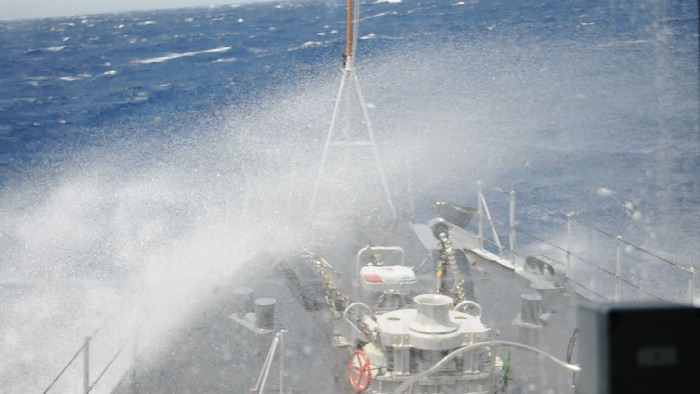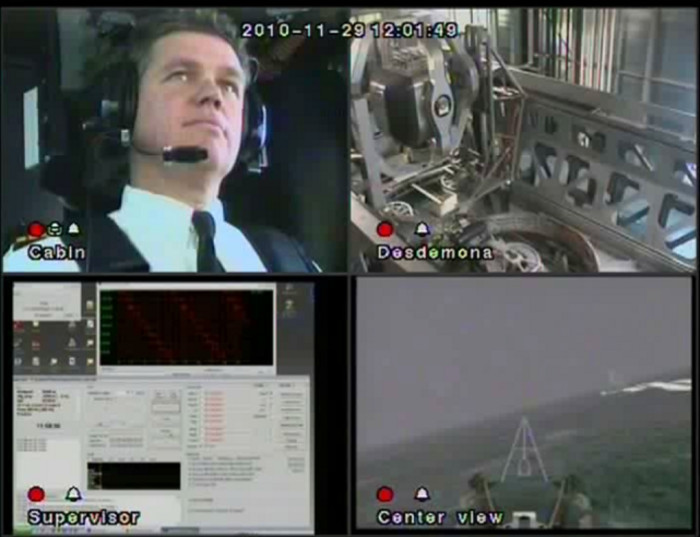Heavy Weather Ship Handling Simulation
In order to be able to operate effectively and safely, the Royal Netherlands Navy (in Dutch: Commando Zeestrijdkrachten, CZSK) needs well educated and trained personnel. Currently no specific training for Heavy Weather Ship Handling (HWSH) is available. Learning to handle ships in heavy weather is learned on the job in real world situations under guidance of experienced officers. The CZSK has a lot of practical experience in these real world situations, but training and doctrine identification and evaluation in a land based simulation would make training safer, more cost effective and save time. Currently the CZSK uses a Full Mission Bridge Simulator (FMBS) in educational programs, however that simulator is fixed based. In a fixed based simulator many of the necessary procedures can be practiced, but the question remains to what extent one can perform the same procedures during real world heavy weather situations?

The Defence Materiel Organisation (DMO) is responsible for all materiel within the defense organization: from concept design, procurement, exploitation to disposal. The DMO now faces the questions that if the CZSK wants to offer HWSH as part of their educational program and as a doctrine identification and evaluation aid, is a motion base beneficial or even necessary for a HWSH simulator? To answer that specific question the DMO tasked TNO to conduct a scientific experiment in a controlled environment. This experiment has been conducted as a project in the "Beter presteren bij bewegen" program. The experiment was executed in cooperation with MARIN and Desdemona.
The Generic Methodology for Verification and Validation (GM-VV) was employed in order to find if the simulations and the experiment as a whole are acceptable, or not, to use as a base for the advice on the use of motion.

The HWSH experiment focuses on determining whether physical motion is important in simulation based training and doctrine identification and evaluation, the V&V work is intended to make sure that the advice based on the experiment results is sound. During the preparation and the experiment close cooperation was maintained between the experiment team and the V&V team to mutual benefit.
The V&V conclusion on the HWSH experiment is that the used simulator and experimental set-up and the reporting of the findings to the customer are of sufficient quality.
The V&V added value for the experiment team was giving indications of what aspects would be checked and which criteria would be used, such that the experimental set-up could - where necessary and possible - be changed accordingly. The V&V added value for the customer was that the V&V issues were reported to the customer and the experiment team such that the reporting of the experiment's results were fully balanced, allowing for better decisions on the use of motion in simulation.
Back












